Harsh Victory at Position X
Commitment, sacrifice and luck secured a vital early win in the south-eastern campaign, but can Ukrainian forces press on?
Harsh Victory at Position X
Commitment, sacrifice and luck secured a vital early win in the south-eastern campaign, but can Ukrainian forces press on?
In trench war, depth matters, and the Russians were dug in up to two meters deep.
A sunken city, the maze of crossed trails extended a kilometre on the top of a hill, on the outskirts of the battered town of Orikhiv, 60 kilometres southeast of Zaporizhzhia. The trenches commanded an unobstructed outlook of more than eight kilometres in all directions, controlling the road south.
If Russians were to push forward, they would do it from here. If Ukrainians were to progress on their counteroffensive in the region, they would have to start here, too, on this hill.
That’s what the Ukrainian forces did this past June, and the success they achieved in overcoming this established Russian position is a highlight in a tough counteroffensive campaign, demonstrating skill and courage against great odds. Yet the difficulties they faced also serve warning of larger challenges ahead, and of disparities in weapons and other gaps that could make it hard for Ukrainian troops to repeat this victory as they target further positions ahead.
“I understand that our Western partners were expecting a different counteroffensive. They said it would be fast, and all the rest. But this is not that war,” said a deputy battalion commander with the 65th Mechanised Brigade, who goes by the call sign Poltava. “People who sit somewhere calmly, have a quiet life, drink coffee or tea and look at the screen, that is one thing. When you are actually here, it is not like that.”
This is what it is like.
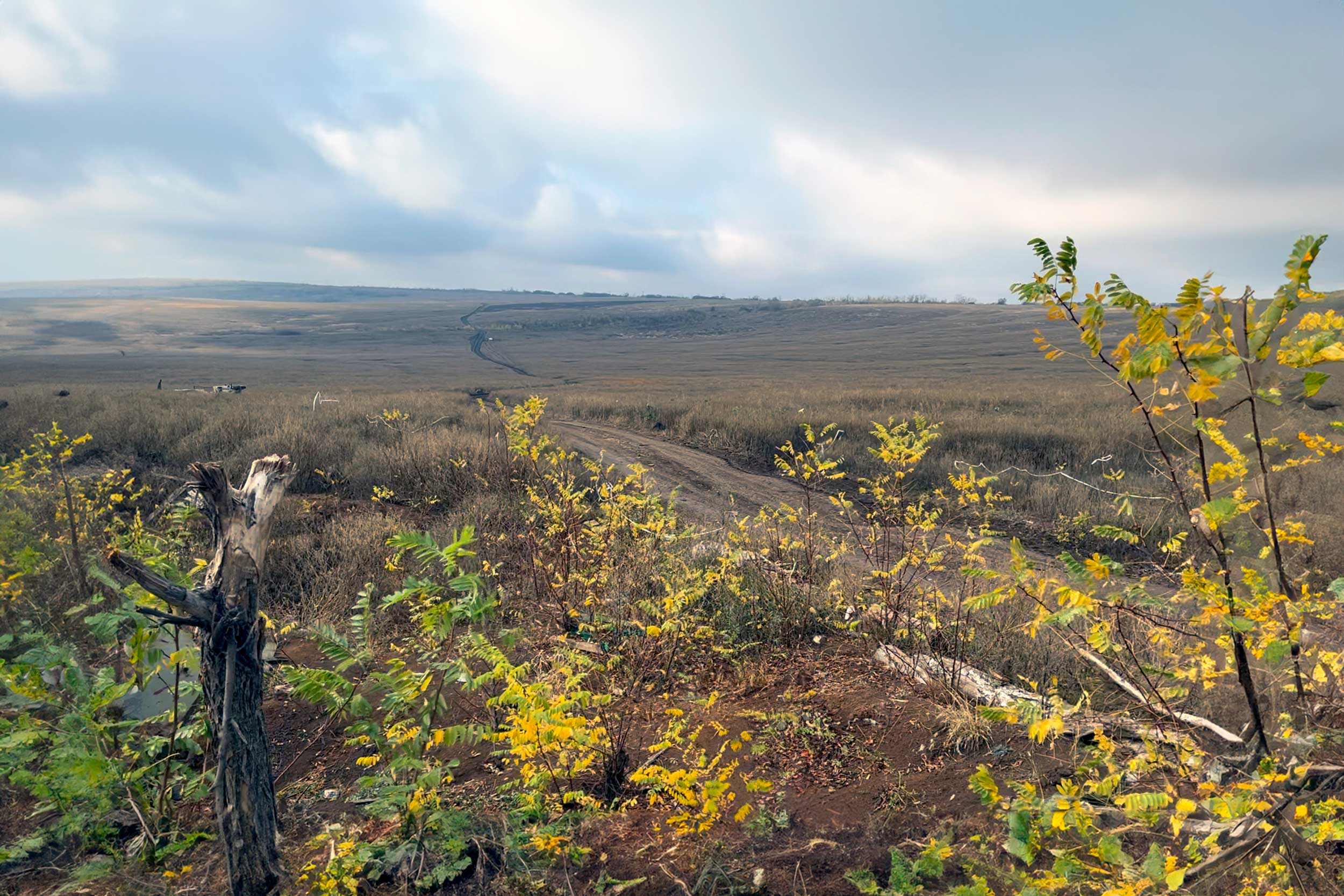
An X Marks the Spot
Due to its structure and also its importance, Ukrainians referred to the Russians’ hilltop dugout as Position X, the heart of the Russians’ first defensive line.
The earthworks included protected gunner posts, large munitions stores and regular blindages, sections covered with thick beams, dirt and sandbags for soldiers to duck in for cover.
Sleeping quarters for six had tree-trunk roofs, boarded walls and bunk bedding, wired for lighting with generators. More than a dozen of these mini-dormitories could accommodate over 100 Russian soldiers at a time. Prepared over many months with the assistance of Wagner forces, and in place for a year, this was a forward outpost intended to be held.
Until the morning of June 8, when the Ukrainian 65th Brigade succeeded in storming and securing the hill – the fifth attempt, after several months and many casualties. For weeks afterwards, the Ukrainians would have to hold on in defence, as Russians shelled the redoubt they had just fled.
A modest victory in terms of land gained and forces destroyed, Position X’s position over the pathway south was vital in opening the way for more advances. Now able to move along that key road, Ukrainian troops then secured the village of Robotyne, four kilometres away. The next objective is the small city of Tokmak, a transport hub 20 kilometres on. A further 50 kilometres ahead lies Melitopol and the sea.
Seizing Position X was key to the most notable forward movement of the Ukrainian counteroffensive so far. If the Ukrainians achieve further success in the south-east, the strategic hill ground out here will have proved critical.
“This is the gate to Robotyne and to the advance in the Zaporizhzhia direction,” said Sergii, 43, an officer with the 65th. “And we managed to take it.”
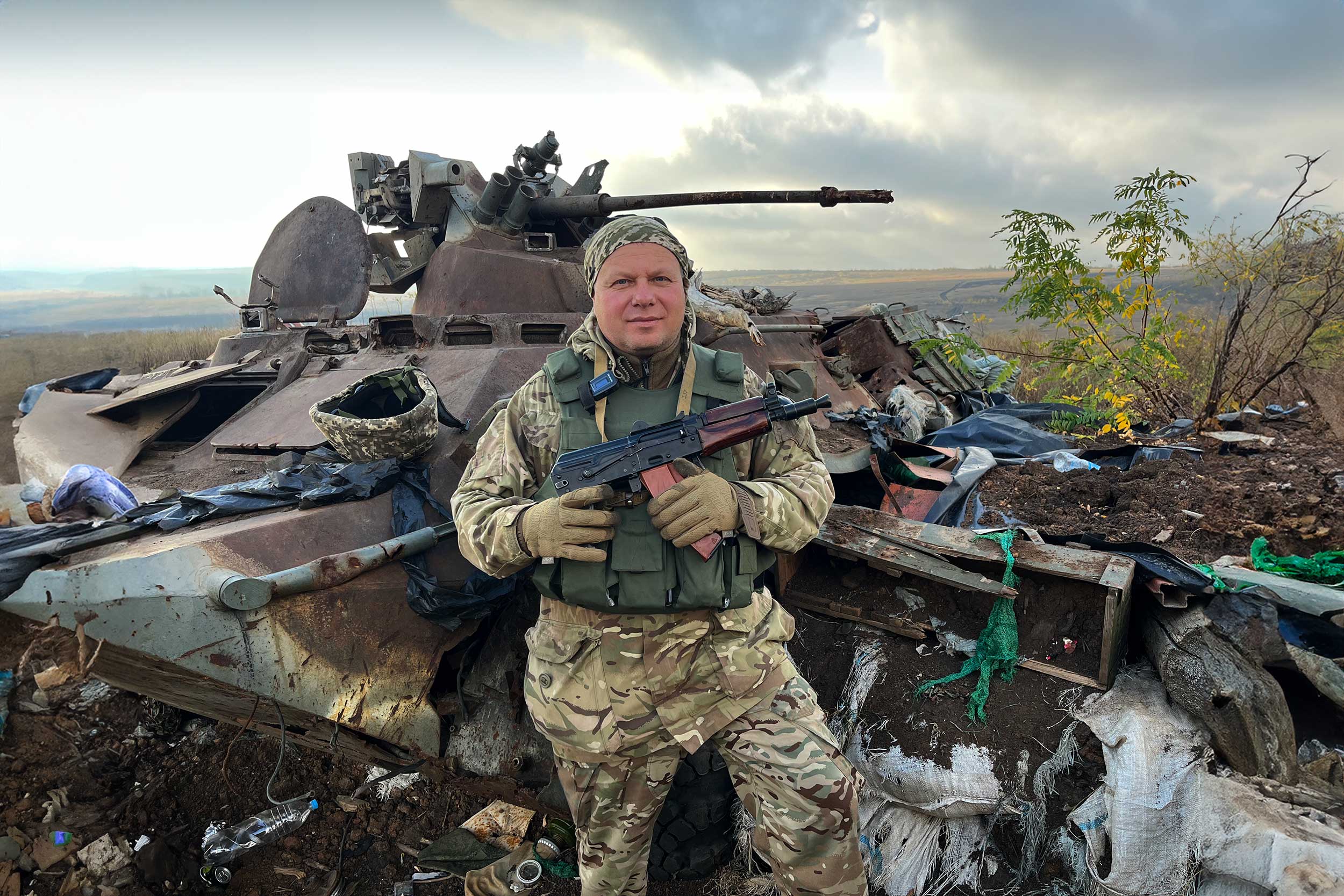
Armoured Failure
The X shape of the trenches made attack difficult, as any advance was met with a hail of fire from two angles. Covered machine gun positions are dotted throughout, every 10 to 20 metres, with the depth and construction of the trenches providing strong protection. The entire area was heavily mined.
This meant that Ukraine made its first attempts to take the position with armoured vehicles, crucial for bringing troops forward and evacuating casualties. They are also extremely loud. The brigade’s Vietnam-era armoured personnel carriers (APCs), provided by the Netherlands, belch and churn at an infernal volume which could be heard more than eight kilometres away, effectively announcing their arrival.
Tanks are less noisy. But Russian forces are well stocked with anti-tank weapons, as well as attack drones. One APC took two direct hits from a bazooka to no effect, but a third pierced the hull, killing two and wounding three. At least one tank was hit, causing repairable damage and wounding soldiers. But as the campaign progressed, the highly-prized T-72 tanks, from Poland, remained further back, for mobile artillery support rather than direct frontline engagement.
As the Ukrainians learned, any accumulation of men or vehicles quickly attracted a ferocious response. The first two attacks in the spring failed.
To beat the Russians, Poltava explained, Ukraine should have “a [numerical] advantage, two, three times, that is the minimum. We didn’t have such an advantage here, so we tried to take these positions with armoured combat vehicles. But the experience showed that the use of equipment is impossible here, because on all sides the opponent uses anti-tank weapons, artillery, even aviation.
Interview with ‘Iskra’, tank commander with the 65th Mechanised Brigade.
“They have a direct line they can dial and say, I need the air force . . . and in up to 30 minutes, they fly in” – a devastating capacity Ukraine cannot match.
Facing up to the challenge, the Ukrainians shifted tactics. They could see that the Russian’s own approach was evolving.
Along with the many other traditional advantages – higher ground, more men and munitions, broad minefields, air support – a game-changing new factor was drones.
These have been a major feature of the war from the start. Yet if both have significant drone capacity, the technology race is escalating day by day, as is production capacity. Ukrainians cite many downed drones with Asian-produced electronics and 3-D printed structures – cheap and deadly.
In a corner of a field in the area, an advance drone protection team for the 65th perches on constant duty, no more than a tiny camouflaged field kitchen, a covered space to park a vehicle and a deep winding trench.
Rather than shoot down drones, they use a highly effective electronic ‘gun’ to disable their electronics, making them crash. The team claim a 100 per cent record to date in their patch. But they have only one such gun, meaning that attacks with multiple drones are an extreme challenge, and the situation is only getting worse.
Ukrainian soldiers now talk of the Russians unleashing dozens and sometime up to 100 drones at once, a veritable blizzard.
Russia’s kamikaze drones are particularly feared. First-person view (FPV) capability on both sides gives even smaller drones the immediate capability to deliver bombs.
‘‘Anti-drone devices help, but it is impossible for us now to cover such a large front,” Poltava said. “We need to install anti-drone stations, so you are not just running there with a gun but can cover a radius of five or ten kilometres to provide protection for people on combat missions.”
Short of this, soldiers in the field have developed a good ear for drones, from a light hum to a loud buzz.
“I learned to listen well, what is flying, where is it flying from, which side it is flying from, how to react to kamikazes,” says Leonid, 44, a private with the brigade. “These are the nuances we now have.”
Interview with Leonid, soldier with the 65th Mechanised Brigade.
Fourth Time Unlucky
Responding to their losses, Ukrainians shifted from armoured vehicles to small units, approaching by foot. This parallels a change across the frontline, on both sides, reducing exposure and useful for probing for weaknesses in a defensive line.
After suffering major losses over the summer, Russians at Kupiansk moved away from large-scale frontal attacks towards using smaller units, requiring Ukrainians to use more munitions.
With a highly motivated civilian army, Ukrainian commanders at their best do at times support on-the-spot initiatives by small units so they can take advantage of opportunities and swerve risks where possible. Here, it became essential.
“Before, we could advance with a battalion or companies. But now we have to use small groups to infiltrate and to take a position,” said Poltava.
Rather than firing up noisy APCs, they shifted to lighter, quieter vehicles – in some cases using private cars, often provided by volunteers.
“This is to be mobile,” Poltava continued. “You can drive up with a car quickly . . . bring ammunition, bring food and other things, and leave just as fast.”
Their target was the base of the X, a disabled Russian APC, converted by the enemy into the cover for a massive steel-protected blindage. Perched at the crest of the rise, with a protected dugout underneath, it overlooked the important southerly road below.
Interview with a soldier from the 65th Mechanised Brigade.
To approach it, the Ukrainians started to establish a bridgehead, at a location they called ‘the Corner’, a few hundred metres from the Russians. They were able to dig a shallow trench, less than three feet deep, and create a few blindages for cover, maintaining a small unit there at all times, regularly under fire.
“For the soldier, it is hot for him. He's afraid. It's normal for a person to be afraid,” said Poltava. “It's very heavy when you're sitting in a trench, and everybody is shooting at you.
“We began to move forward taking up this position slowly, but there were a lot of wounded. With the help of this position, we equipped it little by little to start the attack on the Russian position.”
With this revised approach, the Ukrainians attacked twice. Drivers would race in and drop soldiers around three kilometres from the site, and then head back immediately to avoid detection. Soldiers would be loaded with up to 40 kilos of supplies, from food and water to ammunition and comms equipment, not to mention weapons and flak jackets – lugging the weight all the way.
As before, these two further engagements were supported by Ukrainian artillery fire. But the overwhelming force and firepower of the entrenched Russian position overcame the Ukrainians.
Not using their APCs at close quarters, they were required to carry out their dead and wounded, a risky and laborious task under fire. A commander was injured by a mine, losing his leg, and had to be carried out nearly two kilometres. Other evacuations took several hours.
The fourth attack took place on the afternoon of June 7. By the evening, exhausted and battered, the Ukrainians withdrew again.
“This war is a war. Blood, corpses – you can't describe it in words. I won't tell you the percentage, but there were losses,” said the soldier Leonid. “Most of them were 300 [wounded]. There were also . . . yes, mostly from artillery. There was an explosion, I was still on a position, the place was blown up, right on the position. Two, as they say. During the storm [attack], even more.”
Yet another offensive effort had ended in failure.
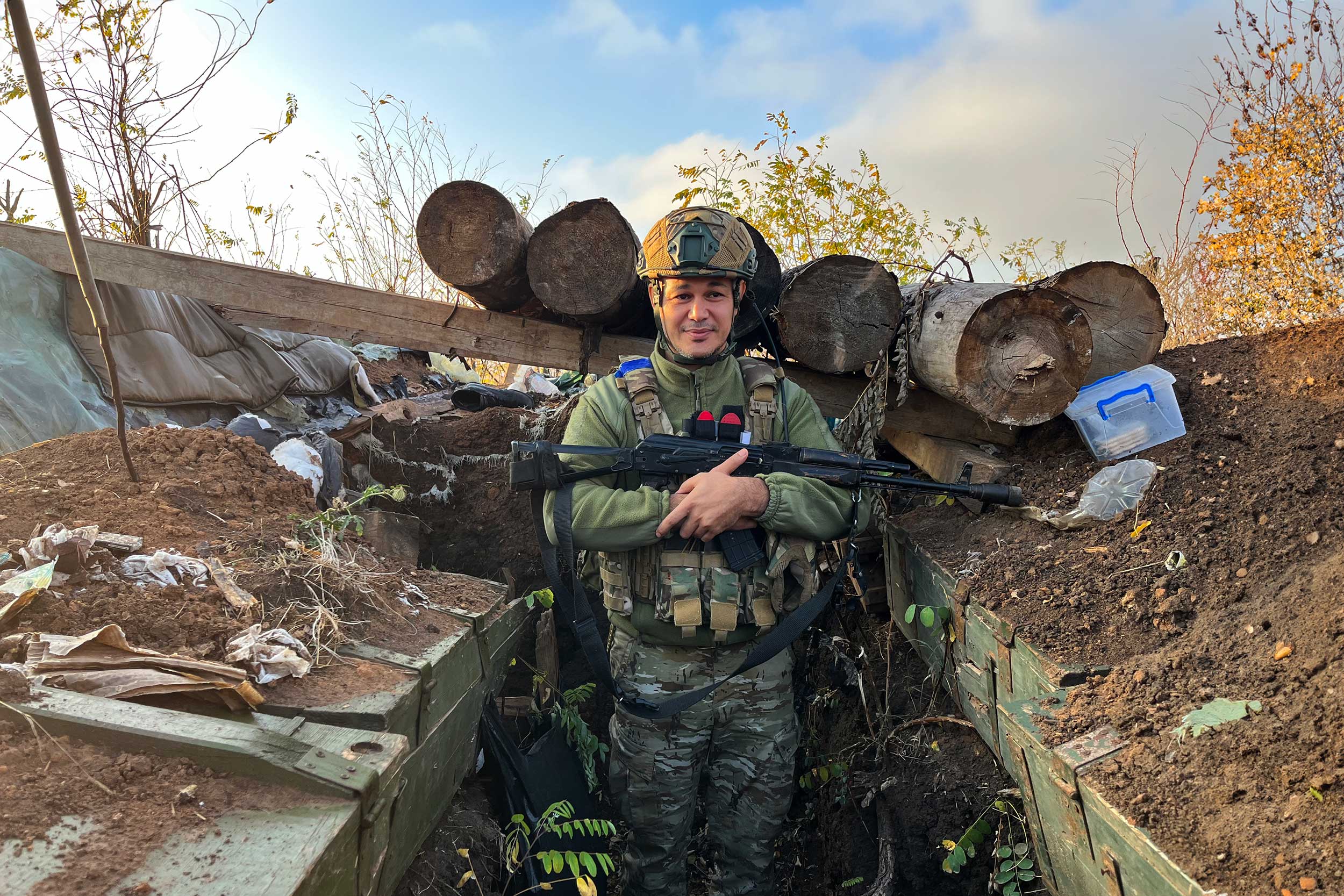
Changing of the Guard
The Russian forces were also battered. As the Ukrainian units returned to base, over the coming hours, Ukrainian air intelligence picked up something remarkable. The Russians, in their hideout, were evidently no longer on guard. Recovering from the onslaught, they did not appear to be armed at their firing stations.
More significantly, activity on the road south was only one way. It seemed the Russians had chosen straightaway to undertake a large-scale rotation. Troops left Position X for the Russian back lines, presumably with the plan to replace them with refreshed forces. Only a skeleton unit remained on duty.
The Ukrainians made a crucial decision. They would regroup, recover and return to launch a fresh attack that morning.
“On the 7th, when we were fighting here, storming these positions, the Russians had come halfway [to the Corner], and when fire started to fly from all sides, they assumed our forces were gone,” said Poltava.
“They did not expect that the next morning, even in the dark, our troops would come back. They were already so tired, they thought they had repelled our advance, so they would make a troop replacement. But when we talked, we decided to storm these positions again in the morning. They did not expect this,” he said.
Before sunrise, a few dozen Ukrainian soldiers – many of them having taken part in the action the day before – headed back out to the hill, with deputy battalion commander Poltava in the lead. Following the same path, they were dropped a distance from their staging point, and at around 5:30am made their way towards the Corner.
Then as the Ukrainians took up their positions, Russians detected them and unleashed a fire storm.
Over two hours, ten kamikaze drones landed all along the Ukrainians’ shallow trench, large explosions deafening the soldiers and injuring several. Digging in became the key to survival. The Russians also launched flying mines, with strong magnets sensing any soldier nearby. No direction seemed free from fire.
Yet as the sun rose, the momentum shifted. With the majority of Russian troops on rotation, the numbers were more level, and Ukrainians were able to advance, using grenades and machine guns. Closer combat advantaged the Ukrainians and a unit was able to approach and secure the position at the APC, their first objective.
This allowed others to move forward and provided oversight of the road, enabling the Ukrainians to prevent reinforcements from arriving.
In total, the Ukrainians counted 11 Russians killed, including a number on the road. Many others fled.
“They mostly ran away. They were not ready for us and they gave up,’ said Leonid, the soldier. “Their artillery and their tanks, these are their trump card. But in close combat, they run.”
Leonid said that Russian intelligence had provided them with ample warning on each of their previous attacks.
“We had stormed them four times, unluckily, because they were waiting for us. They had a phone message informing them when we would come,” he said. “It would say, ‘Wait for your guests,’ and give the time. This time they were not waiting for us.”
Finally, Position X – and its control of the critical road south – had been secured.
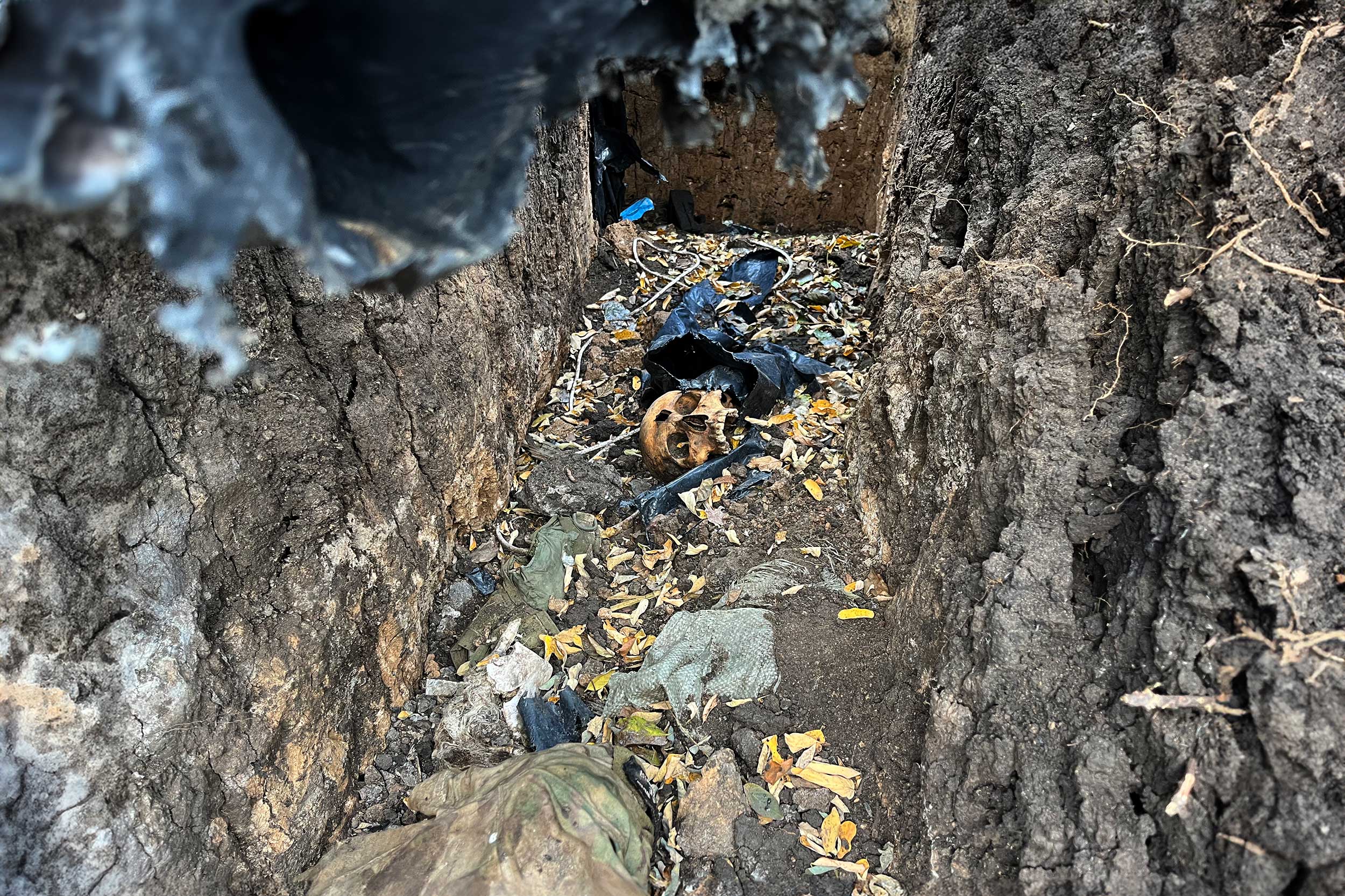
Raising the Flag
The first task after seizing the high ground was to hold onto it against a Russian counterassault, which lasted several weeks.
“Russians knew they had lost this position [X], but they used a rocket launch system here and completely covered it,” said Poltava. Russian artillery and drones targeted their former location, decimating tree cover.
Even with the controlling overlook of the road in Ukrainian hands, heavy mining made progress slow.
“The road, fields, forest – all of them are mined,” Poltava said. “If you take a field road, there can be about 50 or 100 mines.”
These included seismic mines that react to weight and movement, targeting not individuals but designed to take out an entire small unit.
“After we managed to take Position X, it became possible to storm further,” said Sergii, 43, the officer. “Checkpoint One, then Checkpoint Two, and we could move on.”
These were not simple operations, and involved several other Ukrainian brigades. But by August, the Ukrainian flag was raised in Robotyne. Russia’s frontline had been pushed back several kilometres, and Ukraine’s much-touted counteroffensive was up and running.
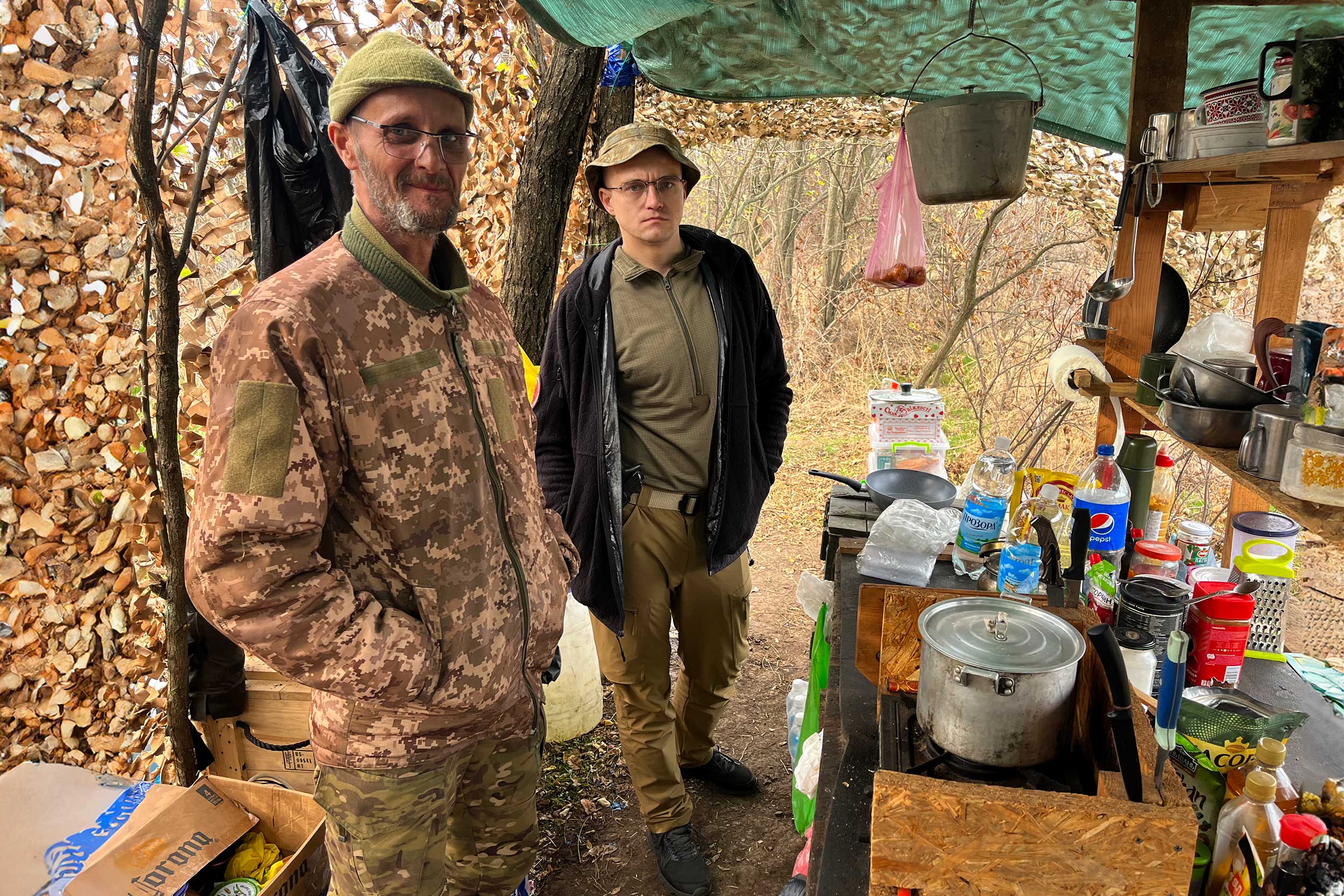
To the Sea
Ukraine has continued to make southerly progress, but the going has been very slow. The next major objective is the town of Tokmak. This would put them well behind Russian defensive lines, and control an important road hub.
Any meaningful squeezing of occupied territory would have important military and psychological implications, and complicate Russian logistics. It would also point Ukrainian troops towards Melitopol, a game-changing prize.
For now, soldiers explain that they are targeting Russian positions, whether in fields, forests or anywhere.
Yet if taking Position X was hard, the challenges ahead are only greater. With more time, the second Russian defensive line is even stronger, and the third even more so. Some areas are so strong, reinforced with concrete, they can take a direct artillery hit and not be affected. Ukrainians report that some trenchworks have storeys underground and extensive video equipment enabling battlefield monitoring from safety.
The Russians are also learning quickly, requiring the Ukrainians to shift their own tactics constantly.
“In June, we could spend hours at one position. But the Russians have adapted,” said a tank commander, 30, who goes by the call sign Iskra, or Sparkle. “They have lots of FPV drones, they have counter-battery capabilities and counter-tanks weapons, which they use actively and they have enough of them. So now when we are working from some position, we try not to stay there more than five minutes.
“If you take last year and this year, the use of Russian tanks and FPV drones has increased maybe ten times. And the amount of enemy equipment and enemy troops per square kilometre has also increased significantly, with fortified areas.”
The 65th has even recovered Russian military guides outlining how to respond to the Ukrainians’ own evolving, small-unit approach, showing that the tactical situation is highly dynamic.
“At the moment we are in defence, active defence, but it's defence. This is because, as I understand it, we don't have enough capabilities, not human capabilities nor technical capabilities,” said Leonid.
The talk is that new, upgraded equipment is expected but hasn’t arrived yet. In any case, realistic about the difficulties, all the soldiers hope that Ukrainian forces will be able to approach Tokmak in the New Year.
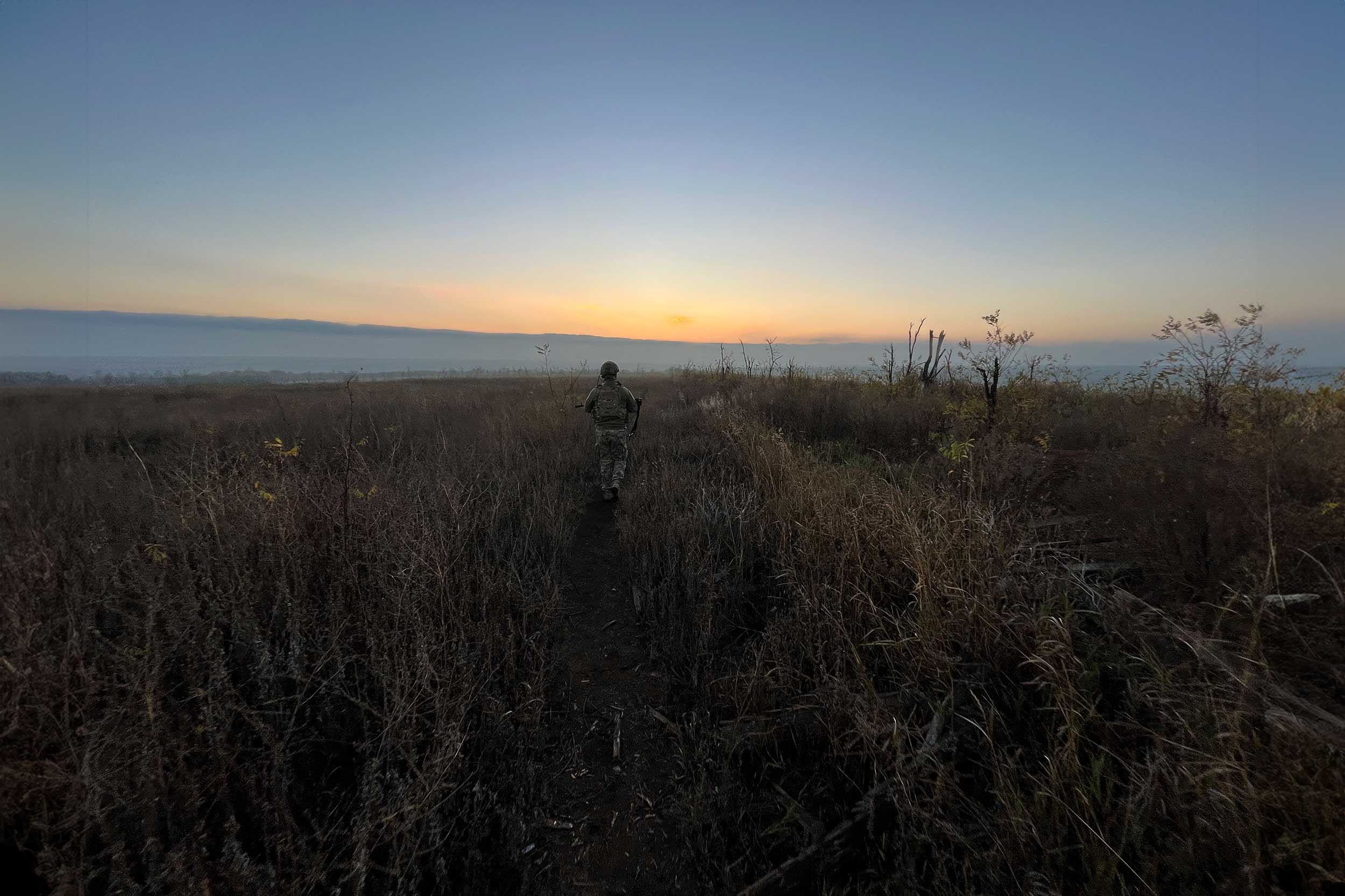
Beautiful from Above
On a clear November dawn, officers of the 65th Brigade give a tour of their hard-won trophy. The smashed buildings of Orikhiv’s outskirts give way to the deserted militarised zone of the frontier, fields and long roads in the dark blue of emerging light.
Once dropped off, the walk is down a dirt road, past one of their private cars used for transport, burnt out. With increasing visibility, crossing an open field reveals a broad natural expanse. The rise is modest, but in a flat area the unobstructed vista is 360.
“If you look from above, the picture is beautiful. But we didn't come from above, we were below,” Poltava says.
Five months after the battle, the Position X trenches are discreet – submerged, camouflaged, winding. As the sun rises, the deep boom of surrounding Ukrainian artillery becomes more frequent. Incoming may be expected after a time.
Walking within the deep trenches, traces of Russian forces – and their hurried departure – are everywhere. Ordinance stores are filled with mines, detonators and unwrapped drone bombs. Tins of shells, rusted hand grenades and wooden munitions cases lay about open.
Tight living quarters have twisted sleeping bags on the multiple bunks and the floors, and rat droppings. Russian food cans, metal plates and cutlery, plastic water bottles and cigarette packs are scattered throughout.
Occasional dirt mounds disturbing the line suggest a shell hit with impact, though it is impossible to tell on this embattled turf from which side.
The rabbit warren runs on and on, with frequent labyrinthine splits. Down one route rests a soldier’s skull, upturned. The remains of a second lie beyond.
The outgoing sounds of Ukrainian artillery continue, and in the distance, a massive wall of white smoke rises from the besieged Russian lines they continue to target outside of Robotyne. At their closest, Russian forces remain only 3 kilometres away.
Poltava shows off the Corner, their staging point where the attack began that morning, and indicates where the kamikaze drones rained down, one after another. “They started hitting here, there and there,” he says.
Suddenly, his radio crackles to life, warning of drones. Then the whizz-crack of an 152mm artillery shell screams above, landing in a field less than 100 metres away, a grey cloud rising from the strike. Shortly after, another. All take cover in a nearby blindage, nestling for safety there once again, just as they had in June.
The shells had been probing, more likely intended for nearby artillery rather than this detachment. Nonetheless, minutes later, the radio announces a pickup and the group climb from the trench, walking at pace single file down the mud road.
A battered Jeep Cherokee appears and makes a fast U-turn. Doors open, and all cram in quickly. The vehicle takes off at speed down a heavily pockmarked back route, hugging a tree line for disguise against search drones.
Eyes forward and rifles up, not until the damaged city sign for Orikhiv appears, and its wrecked houses and buildings return, do the officers fully relax and talk freely among themselves.
Position X has been taken, but the frontline is never far away, and harder tasks lie ahead.
Anthony Borden is founder and executive director of the Institute for War & Peace Reporting. Mykhaylo Shtekel is a Ukrainian war reporter and former correspondent for Radio Liberty.

